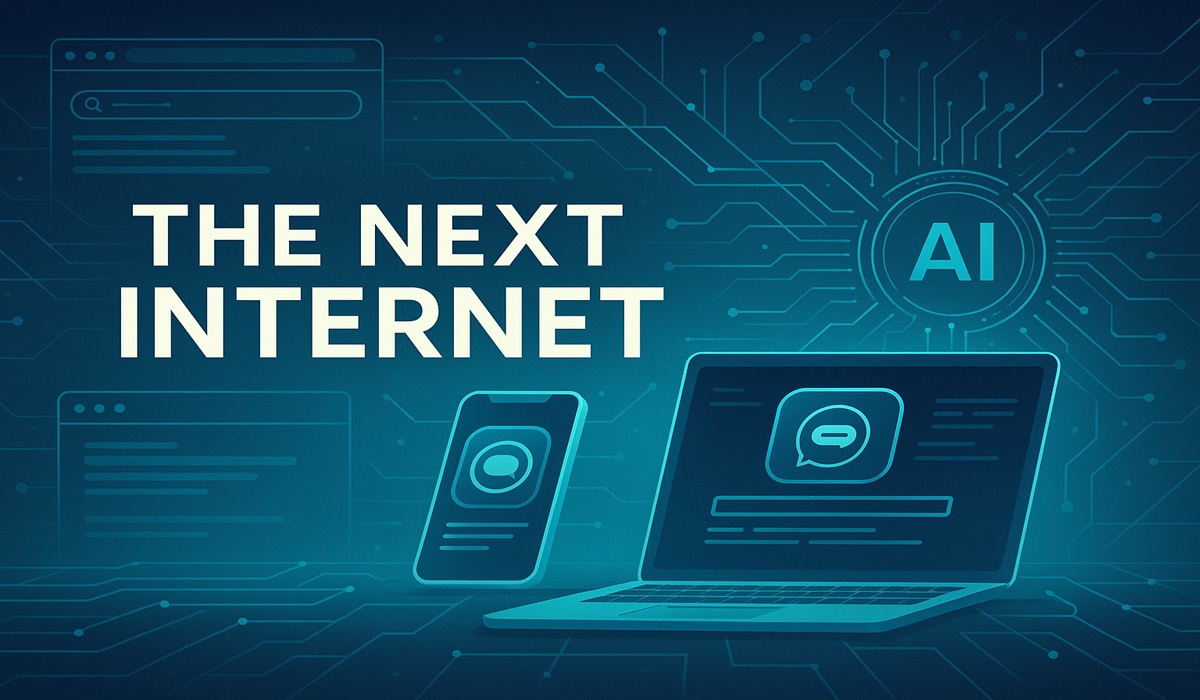The Next Internet Is Being Rebuilt — and OpenAI Is Leading the Charge
- Naomi Dela Cruz
- U.S.A
- October 8, 2025

The world is on the brink of the most dramatic internet transformation since the dot-com boom. But this time, it’s not about websites or social media — it’s about intelligence. The next version of the internet is being shaped by OpenAI and its founder, ChatGPT creator Sam Altman, who envision a digital world where artificial intelligence doesn’t just enhance browsing, it defines it.
For decades, the internet has revolved around pages, clicks, and search engines. That’s about to change. Soon, we’ll navigate an AI-native web that understands intent, context, and conversation — a web that thinks with us rather than merely serving us results.
The current web was designed for retrieval. You type a query, and a search engine gives you a list of links. But the AI-driven internet being built by OpenAI and other major players like Google, Microsoft, and Anthropic is different. Instead of “search,” we’ll experience “conversation.” Imagine asking your browser, “Find me a family-friendly resort in Jamaica with great local food,” and instantly receiving tailored options with reviews, pricing, and even an itinerary — no links, no tabs, no wasted time.
Search engines are already pivoting in this direction. Google’s Search Generative Experience (SGE) and Microsoft’s Copilot integration into Bing show early glimpses of this shift. Yet OpenAI’s vision goes deeper: a fully integrated ecosystem where ChatGPT doesn’t just summarize the web, but becomes the interface to it.
In this AI-native internet, the browser itself will evolve into a personal assistant. You won’t just “open” a page; you’ll converse with an intelligent system that interprets, curates, and acts. Want to buy a flight? Your browser will negotiate the best deal, check weather and travel advisories, and even fill in your passport information securely. Researching a topic? It won’t flood you with articles — it’ll summarize the global consensus, highlight counterarguments, and cite the sources directly.
OpenAI is quietly building this reality. Reports suggest the company is developing an AI-powered browser capable of understanding natural language and performing tasks autonomously — effectively merging browsing, productivity, and search into one seamless experience. Analysts say such a system could threaten Google’s dominance in search, just as smartphones disrupted the desktop era.
Behind the scenes, this evolution is powered by one of the largest infrastructure expansions in human history. Hundreds of billions of dollars are being poured into building the physical backbone of the new AI internet. OpenAI has signed monumental deals with chip manufacturers and cloud providers to ensure the compute power needed to fuel this transformation.
NVIDIA alone is investing an estimated $100 billion to deploy over 10 gigawatts of AI computing capacity for OpenAI systems. AMD, not to be outdone, entered a multi-billion-dollar partnership to supply OpenAI with 6 gigawatts of computing power starting in 2026 — along with options for over 160 million shares as part of the agreement. According to the Financial Times, OpenAI’s total compute partnerships now exceed $1 trillion in commitments with companies like NVIDIA, AMD, Oracle, and CoreWeave.
And that’s just the start. OpenAI, along with SoftBank, Oracle, and MGX, is reportedly co-developing “Project Stargate” — a next-generation data center project estimated to cost up to $500 billion. Microsoft, meanwhile, plans to spend another $80 billion this year alone on AI-ready data centers across North America and Europe. Collectively, major tech companies have invested more than $180 billion in AI infrastructure in the past 18 months, building what some call “the energy grid of the 21st century.”
These facilities aren’t just warehouses for servers. They are engineering marvels — liquid-cooled, AI-optimized, and powered increasingly by renewable energy. They’re designed to handle the mind-boggling data demands of large language models and real-time reasoning systems that will power the AI-driven web.
For users, this new internet will feel less like browsing and more like interacting with an intelligent partner. Instead of typing keywords, you’ll speak or text naturally. Instead of opening countless tabs, you’ll receive cohesive answers, comparisons, and even actionable steps. The AI will remember your preferences, your tone, your goals — and anticipate your next move.
Planning a vacation, conducting market research, or shopping for a new phone will all become conversational experiences. You might say, “Show me the best phone for photography under $1,200,” and your AI agent will instantly evaluate specs, reviews, and expert opinions before recommending two or three options that suit your budget and needs.
At that point, you won’t need to “Google it.” You’ll simply ask your internet.
Of course, such sweeping change comes with profound implications. Whoever controls the AI layer will wield immense influence — not only over what we see online, but how we understand the world. Advertising will change forever, shifting from sponsored links to AI-driven recommendations. Data privacy, already a fragile issue, will become even more critical as models learn from our personal queries and behavior. And the immense energy consumption of AI data centers has sparked concerns about sustainability.
Still, the momentum is unstoppable. The fusion of AI and connectivity marks the dawn of what experts call the AI-Native Web — a world where the internet no longer just stores information, but understands and reasons with it.
For the first time since the invention of the World Wide Web, we’re not just upgrading our tools — we’re rewriting the very logic of how humans and information interact. And at the center of it all stands OpenAI, reshaping the digital universe one model, one data center, and one conversation at a time.








